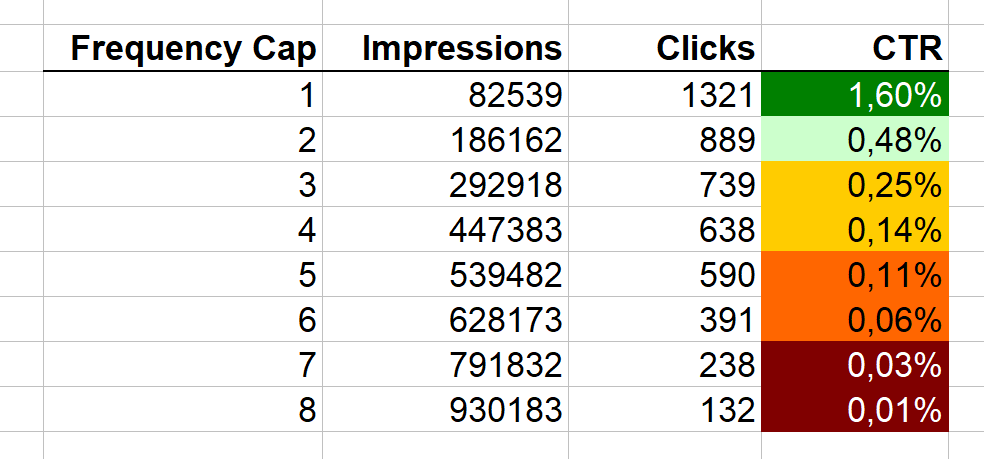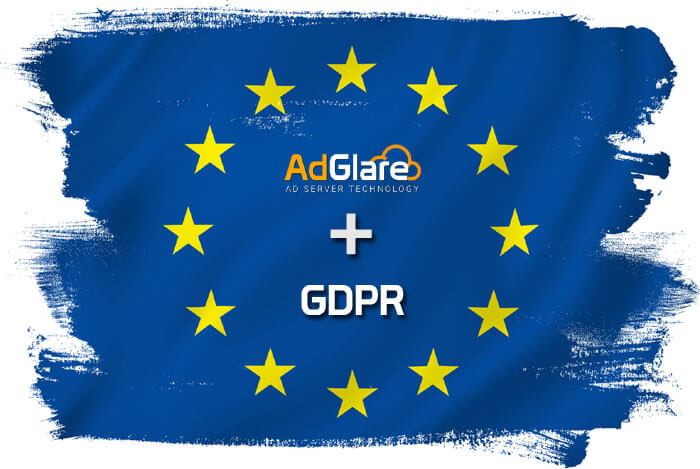Frequency Capping: Best Practices 2023 Guide
Written by Roy
3 min read
1. Frequency Caps: Best Practices 2. Finding the Optimal Ad Frequency 3. What about setting multiple frequency caps? 4. Frequency Capping under the GDPR and CCPA 5. Use Machine Learning in 2025 (and forget about caps) 6. In Summary Frequency Capping is a method in online advertising to limit the number of times a banner ad is shown to a single user. Some ad servers may also refer to this as impression capping. One of the best arguments to set such a cap is to minimize banner blindness and to increase the CTR and ROI of your campaigns. Frequency capping allows you to reduce campaign costs while increasing your campaign's unique reach. If you're on the buy side, this is once more an excellent example why you need an ad server for advertisers. To get the maximum out of your advertising budget, you need to be in control. Frequency Caps: Best PracticesSetting a frequency cap for online advertising campaigns is almost always recommended in most situations, unless you're running remarketing or brand awareness campaigns (where CTR is not your KPI). If you're a publisher, limiting the frequency rate is recommended to avoid 'stalking' your visitors with the same ad over and over again. The optimal ad frequency is hard to determine and may depend on the type of campaign, your objective and the available inventory. We believe it's best practice to:
Finding the Optimal Ad FrequencyIs there an optimal frequency cap? Fine-tuning your cap to find an optimum might be easier said than done: you don't want users to be bombarded with the same ad all the time, while at the other hand you want to make sure your audience gets the message. You can set up a simple test to see what works in your situation. Start with an impression cap of 1 impression per 24 hours per user and measure your CTR over that day. Gradually increase your cap and keep measuring CTR, until you end up with a table like this: 
What about setting multiple frequency caps?A common strategy to distribute media exposure over the day is to set multiple impression caps. This can be a clever method to make sure that visitors who stay on the page for a while are 'remembered' about your message every now and then. For example, you may want to configure your campaign to have the following caps:
Such an approach will show the ad during 5 hours, while avoiding wasting your budget. Frequency Capping under the GDPR and CCPA
This practice however is illegal under the GDPR as per May 2018, since a unique identifier is considered Personal Identifiable Information (PII). Publishers and advertisers who are still using old cookie-based ad servers may expect heavy fines for non-compliancy. As a solution, the technology behind frequency capping should not be based on PII, or on completely anonymized data as used in machine learning. AdGlare does not use PII, nor IP addresses, nor third-party cookies to make frequency capping work. By not processing personal data, this approach is GDPR and CCPA compliant. Use Machine Learning in 2025 (and forget about caps)We're in the year 2025 and machine learning algorithms are everywhere. They are great to calculate the expected click-through rate of a given user based on the day of the week, location, browser, language and the number of times the ad has already shown to that user. Imagine that people from the west need to see an ad 3 times before they click, while people from the east need to see the same ad 8 times before they click. In this example, a one-size-fits-all approach doesn't work... With machine learning, your frequency cap will be optimized automatically for each individual user. 
Automatically improve CTR with Machine Learning in AdGlare
In SummaryFrequency caps comes with great advantages for both advertisers and publishers. You'll likely benefit from capped campaigns because it... checkincreases click-through rates
checkincreases conversion ratio (due to a higher unique reach)
checkreduces campaign costs
checkminimizes banner blindness
checkavoids stalking users with same ad over and over again
checkcan be used without personal data, if you use a GDPR Compliant Ad Server
•••
About AdGlareAs an established ad server, AdGlare has over 12 years of experience in managing, serving and optimizing ads. Reach out to see how AdGlare can help you achieving your advertising goals. Or sign up for a free 14-day trial to take a quick look inside. Download this article as PDF?
No time to read the whole article? Download a free PDF version for later (no email required): Permalink
To link to this article, please use: External Resources |
 Traditionally, frequency caps work by generating a
Traditionally, frequency caps work by generating a